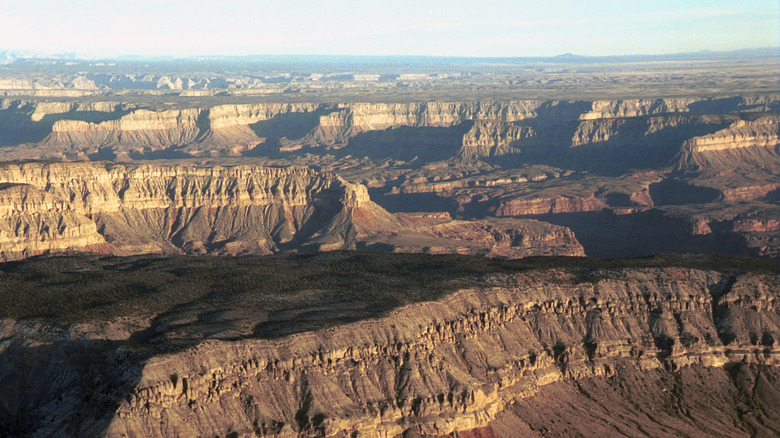A Hidden Wild Gem At The Edge Of The Grand Canyon

Exploring the Untouched Beauty of Grand Canyon-Parashant National Monument
Arizona’s Grand Canyon is often associated with its famous Grand Canyon National Park, but the canyon's vastness extends beyond the boundaries of a single park. The Grand Canyon-Parashant National Monument lies at the far northwestern edge of the canyon, offering a unique and less-traveled experience. This remote area, part of the larger Arizona Strip, provides an opportunity to explore a different side of one of the world’s most iconic natural wonders.
A Hidden Gem in the Desert
Grand Canyon-Parashant National Monument spans over 1 million acres, making it one of the largest protected areas in the United States. It is situated in a rugged desert landscape near the Arizona-Nevada border, where the Mojave Desert, Colorado Plateau, and Basin and Range Province converge. This convergence creates a diverse and striking environment featuring red rock deserts, towering mountains, and dramatic canyons formed by ancient waterways that feed into the Colorado River.
The monument is home to several natural landmarks, including Mount Trumbull, which rises to 8,028 feet, the Shivwits Plateau, known for its rocky terrain, and the colorful Grand Wash Cliffs. These features contribute to the region’s rich geological diversity, with intricate canyon networks, eye-catching buttes, and remnants of ancient volcanic activity. The unique ecosystems also support a variety of plant and animal life, many of which have adapted to the harsh desert conditions.
A Place of Solitude and Adventure
For those seeking solitude and adventure, Grand Canyon-Parashant offers an unparalleled experience. Unlike the more crowded national park, this area is largely undeveloped, providing visitors with a sense of isolation and connection to nature. The monument contains four designated wilderness areas, emphasizing its commitment to preserving the land in its natural state.
Visitors can explore various points of interest, such as the Grand Wash Cliffs Wilderness, the breathtaking Twin Point Overlook, and the otherworldly Andrus Canyon. Additionally, the area holds historical significance, with ancient rock petroglyphs at the Nampaweap site and remnants of early American settlements like Tassi Ranch and the Grand Gulch Mine.
Preparing for the Journey
Despite its beauty, Grand Canyon-Parashant presents challenges due to its remote location. The area has little to no modern infrastructure, with minimal amenities and virtually no reliable cellular service. Visitors must be self-reliant and well-prepared for the journey. Driving into the monument requires a 4x4 vehicle with high clearance and off-road tires, as the roads are often primitive and not suitable for all vehicles.
Hiking trails in the area are rugged and require some backcountry experience, though they offer stunning views and opportunities for off-highway vehicle (OHV) adventures. The lack of nearby lodging options means that camping in the wilderness is the primary choice for overnight stays. The nearest cities, St. George, Utah, and Las Vegas, are several hours away, adding to the challenge of reaching this remote paradise.
Embracing the Wild
For those willing to embrace the challenges, Grand Canyon-Parashant offers a rare chance to experience one of America’s last truly wild places. The isolation and natural beauty of the area provide a soul-affirming thrill, making it a destination for adventurers and nature lovers alike. Whether exploring the geological wonders or simply enjoying the quiet of the desert, a visit to Grand Canyon-Parashant promises an unforgettable journey into the heart of the American wilderness.
Post a Comment for "A Hidden Wild Gem At The Edge Of The Grand Canyon"
Post a Comment